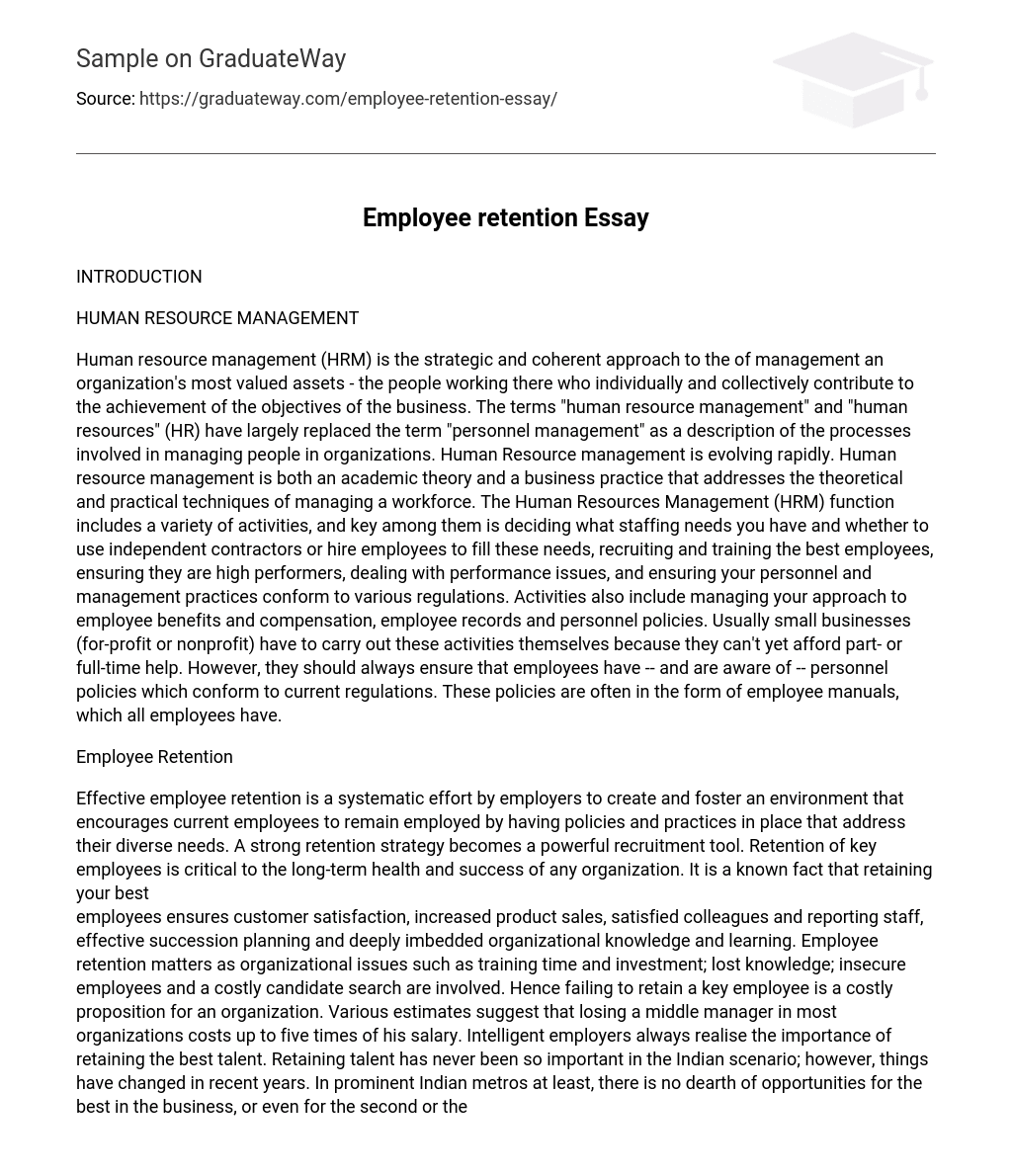Human resource management (HRM) is the strategic and coherent approach to managing an organization’s most valued assets – the people working there who individually and collectively contribute to the achievement of the objectives of the business. The terms “human resource management” and “human resources” (HR) have largely replaced the term “personnel management” as a description of the processes involved in managing people in organizations. HRM is rapidly evolving, serving as both an academic theory and a business practice that addresses the theoretical and practical techniques of workforce management.
The HRM function includes various activities, such as deciding on staffing needs and choosing between hiring employees or independent contractors. It also involves recruiting and training exceptional employees, ensuring their optimal performance, addressing any performance concerns, and complying with personnel and management regulations.
Small businesses (both for-profit and nonprofit) usually handle internal activities like employee benefits, compensation, records, and personnel policies due to financial limitations. It is crucial for these businesses to ensure that employees have access to and understand personnel policies that comply with current regulations. Employee manuals are commonly used to communicate these policies and should be made available to all employees.
Employee Retention
Having policies and practices in place to meet the diverse needs of current employees is essential for employers. This not only aids in effectively retaining them but also serves as a valuable recruitment tool by fostering an environment that promotes employee retention. Additionally, retaining key employees is crucial for the long-term growth and success of any organization.
Retaining your top employees is crucial for various reasons. It leads to customer satisfaction, increased product sales, content colleagues and reporting staff, effective succession planning, and deep-rooted organizational knowledge and learning. Employee retention is significant as it affects organizational issues like training time and investment, lost knowledge, insecure employees, and expensive candidate searches. Thus, failing to retain a key employee can be costly for an organization. Estimates show that losing a middle manager in most organizations costs up to five times their salary.
Employers in India who are aware of the significance of retaining top talent, particularly in major cities, understand that the job market has recently changed. Even professionals with high skills have many opportunities to choose from. Consequently, it is crucial for companies to focus on retaining their key employees and efficiently managing attrition problems.
The Significance of Employee Retention
The challenge of retaining employees has perplexed managers and business owners. How can this challenge be effectively managed? How can a desirable workplace be created that both current employees want to stay in and potential employees want to join?
Effective managers and business owners recognize the significance of retaining employees. The excessive churn of staff can lead to unfavorable consequences, leaving both customers and employees in a challenging position. Departing employees bring with them valuable expertise, resulting in a lack of consistency that hinders the attainment of organizational objectives and the delivery of exceptional customer service. Furthermore, replacing employees incurs considerable expenses. Estimates indicate that replacing an employee can cost up to twice their yearly salary without even considering the loss of knowledge.
Recruiting employees is a time-consuming and demanding task with often futile outcomes. The competition for qualified candidates is intense, and job seekers take into account various factors other than just salary and benefits when choosing a job. Furthermore, training new hires also requires additional time. Additionally, in times of staff shortage, working extra hours becomes necessary to meet the workload.
A consistent principle that distinguishes Employee Retention Strategies:
- Uses only research-based, theory-supported approaches to improving employee engagement. Avoided are gimmicks such as employee of the month, suggestion boxes, prizes or other “carrots.” While commonly used, these short-term fixes fail to produce genuine employee loyalty (more than 60 years’ of research tells us so!).
- Employs an easy-to-understand systems approach to ensure the root causes of turnover are addressed and the potential for lasting change unleashed.
- Customizes all activities to your organization’s unique history, current practices and strategic objectives. Also considered are challenges unique to your industry sector, competitive marketplace issues and talent shortages.
- Involves those responsible for implementing change in actually creating the change, ensuring input and improved shared understanding and support of all initiatives.
- Integrates hands-on, action-oriented approaches that enable organizations to move forward quickly and effectively
- Recognizes the research-proven role of no-cost strategies in developing the “glue” that builds employee loyalty and commitment.
- Brings to your organization leading-edge organization-development best practices to effectively and quickly build a retention-rich culture.
KEi’s EMPLOYEE RETENTION WHEEL
Understanding why employees remain with their current employer is crucial in improving employee retention. While the focus is often on why employees leave, it is the reasons they choose to stay that provide meaningful insights. Employers have implemented various programs and perks in their attempts to retain valuable employees. However, studies indicate that these efforts alone are insufficient in retaining good employees if the necessary support for job success is lacking.
Among the countless inducements offered, only the factors identified in the center of KEi’s Employee Retention Wheel™ truly provide employees with a consistent reason to decline a “sweeter offer.” KEi has extensively studied and gained experience to determine these factors, which are presented in the Retention Wheel. This information enables employers to meet the core needs of employees and reduce the costly consequences of turnover.





